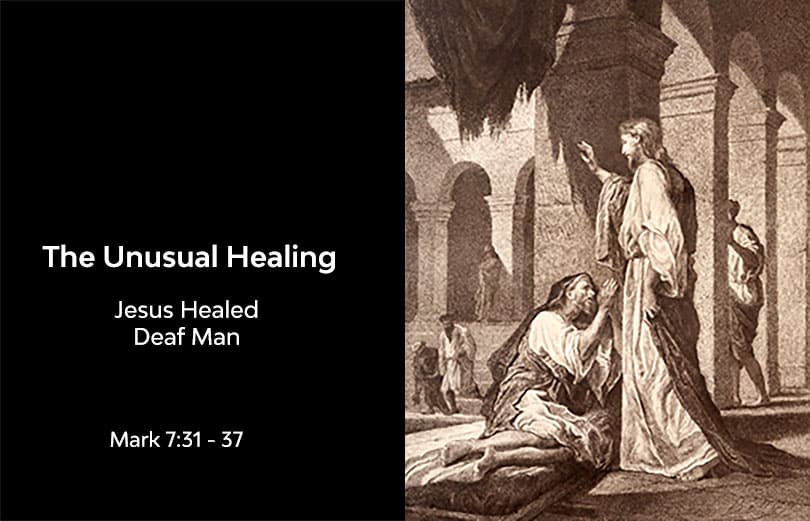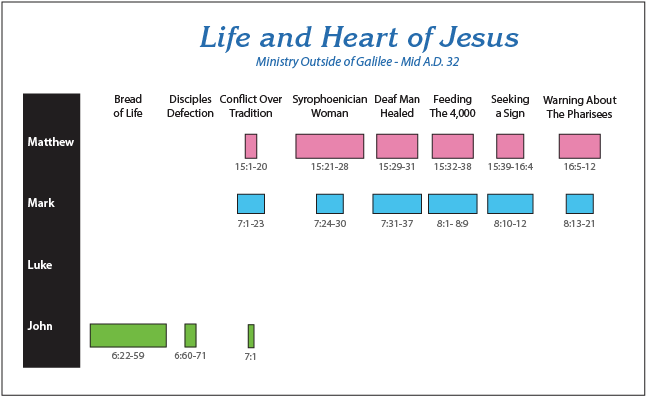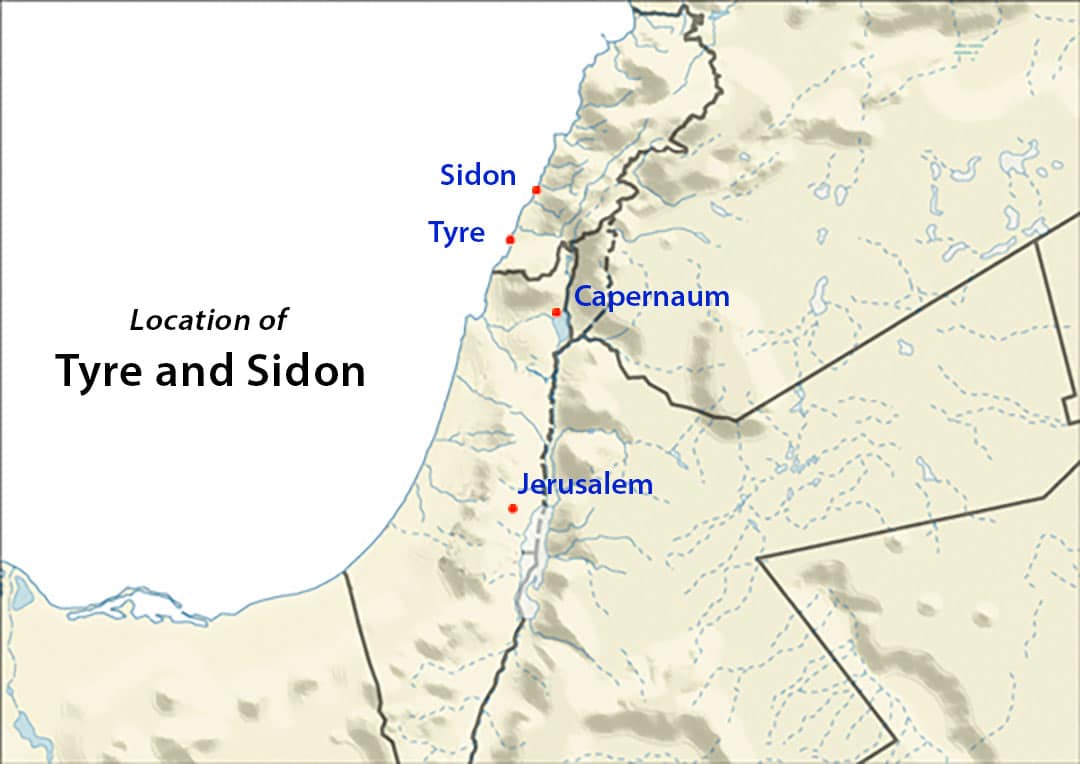Over the years I have had opportunities to counsel people over a wide range of issues. I have counseled married couples and singles. Sometimes I have had to deal with matters of fact and on other occasions issues involving great emotion. Sometimes the counseling was stretched out over multiple sessions. Typically, counseling deals with personal information and it involves great emotion as the counselor connects with the person. Those who come for counseling usually do not know what to expect and are hesitant to open up. The counselor must be patient, compassionate, caring and prepared to give a great deal of time in some situations. This study is about compassion. It is about one who was very compassionate. It is about One who did all things well – Jesus Christ. He was more than the perfect counselor. He was the Healer of healers. The study is also about a man who could not help himself. He was deaf and unable to speak very well. Getting help in such a situation is very difficult. How did Jesus communicate with him?
Background
The events described in this historical account occurred after Jesus healed the Syrophoenician’s daughter of demon-possession. Jesus had escaped the region of Galilee in favor of the region of Tyre and Sidon in order to get some rest but He encountered a persistent woman, desperate to have her daughter healed. At first, Jesus seemed cold and heartless. His disciples repeatedly asked Him to send her away, but Jesus didn’t. That was the first clue that Jesus was not unloving and uncaring. He was already at work – a divine counseling technique. Jesus continued to ignore her for a while. Finally, He told her that she was like a Gentile dog and nothing should be done for her. Then she stopped demanding, admitted she was like a dog, and was willing to accept whatever Jesus was willing to give her. Then Jesus healed her daughter.
After healing the Syrophoenician woman’s daughter of the demon, Jesus left the region of Sidon and Tyre and went to the region known as the Decapolis in an attempt to get the vacation that He sought.
Again He went out from the region of Tyre, and came through Sidon to the Sea of Galilee, within the region of Decapolis. Mark 7:31 (NASB)

The Unusual Healing of a Deaf Man
Sitting On A Mountain
Matthew 15:29 tells us that sometime after Jesus arrived, He was sitting on a mountain, probably teaching, maybe alone, when two or more large crowds arrived.
And large crowds came to Him, bringing with them those who were lame, crippled, blind, mute, and many others, and they laid them down at His feet; and He healed them. Matthew 15:30 (NASB)
Most likely two different crowds came from different directions, having learned that Jesus was sitting there. That means He had been there for awhile. How long? We do not know. Jesus had very little opportunity for rest and relaxation. This reveals his great popularity and how extensively His fame had spread. People came from all over, and they brought the sick and those with physical defects. The lame, crippled, blind, and others came and lay down at His feet. We will see in the next several verses that they lay down at His feet in order to be healed. Apparently, one would lie down and after being healed they move so that another could lie down to be healed. It was clearly an act of submission.
According to the gospel of Mark, a man who could not hear and could not speak very well was finally brought to Him. He is the focus of this historical account.
They brought to Him one who was deaf and spoke with difficulty, and they implored Him to lay His hand on him. Mark 7:32 (NASB)
Someone cared for this man. The man would not have ever known that Jesus was in the region of Sidon, or even be sitting on the hill. He would not have been able to hear about Jesus. Someone had to care for him and help him. Someone had compassion for him.
There is a story told about a man named Hugh Rudd, a newsman, who came home late one night after putting on the CBS late news. He was getting out of a taxi at his home on the East Side of New York.
As he stepped away from the cab, four scruffy-looking youths surrounded him and said, “Give us your money.” He did. Then one of them took a pistol and beat him over the head. Rudd fell into the gutter, just a few steps from home. For seven hours on the fashionable East Side of New York, he lay on that street. He was semi-conscious. A whole parade of people went by: milkmen, people coming home from parties, people going out to work on an early shift. As they passed by him, he kept saying, “Help me, help me.” They would shrug and look the other way. His wife, worried sick, finally called the police. They came and found him at 7:00 the next morning.[1]
Why did so many people ignore this man? This true life account about Hugh Rudd was just like the account of the Good Samaritan. It is an issue of compassion. While it is true that not everyone ignores those in need, it is also true that many will. We hear such stories all the time today. People are not any different today 2,000 years later.
So it is wonderful to discover that some people were willing to help this man. Somebody or individuals who had compassion brought the man to Jesus. Was it a family member, friends, or neighbors? Whoever helped him had compassion for him. Whoever they were cared for him. R. Wayne Willis relates this story,
A student asked anthropologist Margaret Mead for the earliest sign of civilization in a given culture. He expected the answer to be a clay pot or perhaps a fish hook or grinding stone. Her answer was: “A healed femur.” Mead explained that no mended bones are found where the law of the jungle, survival of the fittest, reigns. A healed femur shows that someone cared. Someone had to do that injured person’s hunting and gathering until the leg healed. The evidence of compassion is the first sign of civilization.[2]

The Unusual Healing
So they brought the man to Jesus and begged Him to heal the man. How did Jesus respond? Did He react as He did to the Syrophoenician woman and ignore the man initially? Mark 7:33-34 answers our question.
Jesus took him aside from the crowd, by himself, and put His fingers into his ears, and after spitting, He touched his tongue with the saliva and looking up to heaven with a deep sigh, He said to him, “Ephphatha!” that is, “Be opened!” Mark 7:33-34 (NASB)
These two verses reveal that Jesus did six things before the healing occurred. Jesus’ first action was to take the man aside so that there was some privacy. They were completely alone on that hill, but Jesus wanted the man to focus on Him and not his friends, the crowd, or anything else. Have you ever talked with someone while that person was trying to do something else? I have noticed that such communication is not usually very good. My attention is not usually on the person. Do you ever pray while busily doing other things? Have you ever wondered how God feels, if you are so easily distracted during prayer? I suspect that because this man could not hear, he was being distracted easily. Jesus wanted His full attention. Getting the man away from the crowd, Jesus was able to get the man to focus on Him.
Jesus’ second action was a simple touch. He put His fingers into the man’s ears. Jesus did not care about wax build up in the man’s ears. Jesus did not ask if the man had bathed recently. Jesus did not put on gloves. He just put His fingers into the man’s ears. Why did Jesus do that? The answer is found in the question, “How does one communicate to a man who cannot hear you?” By putting His fingers into the man’s ears, Jesus was drawing the man’s attention to his ears. Jesus was communicating to the man, “I am going to do something to your ears.” I suspect that Jesus had the man’s full attention at this point. If someone puts his or her fingers into your ears, I suspect that you would be looking at the person.
The third action of Jesus was another touch. Jesus spit into His own hands or onto His finger, then He touched the man’s tongue with His saliva covered finger. Some of us would not have allowed that to occur. Yuck, disease and unsanitary! But not this man. What would have happened if the man had refused? Did the man already understand that Jesus could heal him? Why did the man allow Jesus to touch his tongue? Whatever the reason, it is clear that the man submitted. That is what Jesus wants from us when we come to Him – submission. He wants our full attention and our willing submission. “Willing” is the key word. Jesus had it all with this man.
Next we are told that Jesus gave a deep sigh. Even though the deaf man could not have heard that, I am glad that scripture recorded it. It reveals Jesus’ compassion. It reveals the emotion of His heart. The man would have been looking at Him and looking to Him for healing. Jesus’ fifth action was a spoken Aramaic word, “Ephphatha!” The word is a command and it means “Be Opened!” A simple Aramaic word uttered by the Creator of the universe and what happened? The next verse tells us,
And his ears were opened, and the impediment of his tongue was removed, and he began speaking plainly. Mark 7:35 (NASB)
His ears could now hear and his tongue could now speak clearly. When people are deaf, they do not speak words very well since they cannot hear the words they are speaking. This man must have been able to hear at some time in his life, in order to speak at all. Now, according to the Greek text, he was continuously speaking clearly. He spoke plainly in the language of the people and repeatedly. Some may claim to be healers whose healing does not last, but that was not true when Jesus healed. When Jesus healed, they were healed. The man heard and he continued hearing and speaking.

Location of Tyre and Sidon
Why This Technique?
Why did Jesus heal this man in this manner? Was Jesus using a type of magic or healing ritual? Normally Jesus healed by a spoken word. That was the normal pattern. But if we examine a few passages such as Matthew 8:3 we discover that this was not the first time that Jesus healed in an unusual manner. In Matthew 8:3, He touched a leper while healing. In Matthew 8:15, He touched the hand of Peter’s mother-in-law while healing her fever. In Matthew 20:34 and John 9:6-7 Jesus touched the eyes of blind men and gave them sight. In Luke 7:14, He touched a coffin and the dead man returned to life. Jesus’ touch was something special. It was His expression of compassion to any man or woman who was in need, and Jesus is still touching us today – the suffering and needy.
By touching the man, Jesus held the man’s attention and was communicating to the man that He was the one doing the healing. The man did not need to look to anyone else. He only had to look to Jesus, submit to Jesus, and depend upon Jesus. It was Jesus and him and no one else.
Matthew 15:31 records the response of the crowd,
So the crowd marveled as they saw the mute speaking, the crippled restored, and the lame walking, and the blind seeing; and they glorified the God of Israel. Matthew 15:31 (NASB)
The crowd was impressed and so are we, but they were much more for they saw it with their own eyes. They saw person after person healed that day. They saw the compassion of our God. They saw miraculous miracles that day – miracles that we will never see in our lifetime. That explains the next statement in Mark,
They were utterly astonished, saying, “He has done all things well; He makes even the deaf to hear and the mute to speak.” Mark 7:37 (NASB)
Yes, Jesus does do all things well. He is the compassionate One! If anyone doubted that Jesus was compassionate when He ignored the Syrophoenician woman and seemed distant and unloving, then this event should remove all doubt.
Conclusion
Did Jesus’ example touch your heart? Jesus’ compassion to countless people has been evident down through the passage of time as He has healed many from heaven above. He still heals today. He heals from heaven above!
On Monday, August 9, 1993, a thirty-one-year-old woman, Sophia White, burst into the hospital nursery at UCLA Medical Center in Los Angeles, wielding a .38-caliber handgun. She had come gunning for Elizabeth Staten, a nurse whom she accused of stealing her husband. White fired six shots, hitting Staten in the wrist and stomach.
Staten fled, and White chased her into the emergency room, . . . firing once more. There, with blood on her clothes and a hot pistol in her hand, the attacker was met by another nurse, Joan Black, who did the unthinkable. Black walked calmly to the gun-toting woman, hugged her, and spoke comforting words.
The assailant said she didn’t have anything to live for, that Staten had stolen her family. “You’re in pain,” Black said. “I’m sorry~but everybody has pain in their lives . . . I understand, and we can work it out.”
As they talked, the hospital invader kept her finger on the trigger. Once she began to lift the gun as if to shoot herself. Nurse Black just pushed her arm down and continued to hold her. At last Sophia White gave the gun to the nurse.[3]
This study has been God’s call to be like Jesus – to show the compassion of our Lord Jesus to others as nurse Black did to Sophia White. May the Lord bless you.
References:
1. R. Kent Hughes. Mark. Crossway Books. vol. 1, 1995. pp. 179-180.
2. E. K. Rowell, 1001 Quotes, Illustrations & Humourous Stories. Baker Books, 2006., p. 210.
3. E. K. Rowell, . Ibid., p.211
Suggested Links:
Cleansing of the LeperThe Paralyzed Man
Healing At Bethesda